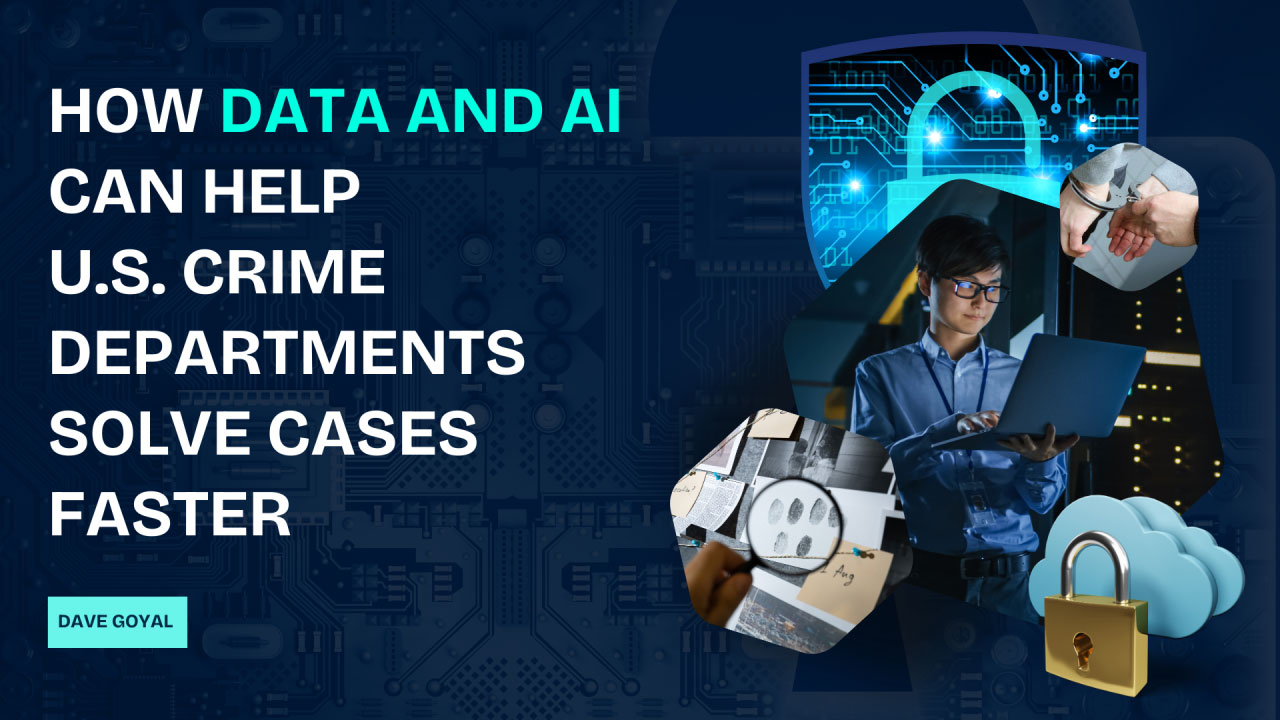Imagine a world where police don’t just react to crime-they anticipate it. Instead of scrambling after an incident, officers are already positioned where trouble is likely to emerge. It’s not just a concept now: police departments across the U.S. are making this a reality by harnessing the power of data, AI, and smart analytics.
Gone are the days of thumbing through old reports. Today, real-time data analytics and AI-driven tools help law enforcement spot crime patterns, predict risks, speed up administrative tasks, and empower officers with better, faster decisions-all in the service of solving real problems for communities.
But technology alone isn’t enough. Without thoughtful planning and strong project management, even the most advanced tools can fail. Let’s explore how AI, smart applications, and careful implementation are transforming policing from reactive to proactive.
1. Predictive Policing: Spotting Trouble Before It Starts
Let’s be honest, police can’t be everywhere at once. But what if they had a heat map showing the neighborhoods most likely to see a surge in car break-ins or gang activity this weekend? That’s the idea behind predictive policing.
Using historical crime data, weather patterns, local events, and even traffic flow, AI algorithms can identify emerging hotspots. In cities like Los Angeles and Chicago, these systems help prioritize patrols and investigations. While these tools aren’t crystal balls, they give officers a huge edge, especially when used responsibly and with oversight to avoid bias.
How to improve it: Combine predictive models with real-time community feedback and make transparency a priority. Explain how the system works, so the public feels involved, not watched.
2. AI in Dispatch: Every Second Counts
Picture a 911 call coming in from someone who’s panicked and struggling to explain what’s wrong. An AI-enhanced system can analyze keywords, urgency, caller tone, even background noise, and help dispatchers determine the right response faster.
Programs like the STAR (Support Team Assisted Response) initiative in Denver are exploring how AI can help decide whether an officer, paramedic, or mental health team should be sent. That means faster help, fewer misdirected calls, and better safety for both responders and citizens.
How to improve it: Build human-AI collaboration into dispatch training. AI should suggest, not decide, so human expertise remains in the loop.
3. Smart Surveillance: Watching with Purpose, Not Just Cameras
Surveillance isn’t new, but what’s changing is how video footage is used. AI can scan thousands of hours of footage, flag unusual behavior, and identify known suspects much faster than a human ever could.
New York’s MTA is testing video analytics to spot behaviors that could signal suicide risks on subway platforms. Police in several states are using AI-powered drones and facial recognition tools during events and investigations. But there’s a fine line here: privacy and civil liberties must be respected.
How to improve it: Define strict rules for when and how surveillance AI is used. Make audit trails mandatory and publish usage reports.
4. Automating the Paperwork: Let Officers Focus on Policing
Officers often spend hours on paperwork; writing reports, logging evidence, managing case files. AI can turn hours into minutes. Tools like Axon’s “Draft One” are using generative AI to create first drafts of police reports based on voice recordings.
It’s not just about convenience. Faster reporting can mean quicker case processing, fewer errors, and more time for officers to engage with the community.
How to improve it: Always keep a human in charge of final edits. AI helps with speed, but accuracy and legal compliance still need a trained eye.
5. Project Management: Great Tech is Useless Without a Plan
Let’s say your department just got funding for an AI-based crime mapping tool. Awesome. But who’s going to lead implementation? Who’s training officers? How are you measuring success?
This is where project management saves the day. A well-scoped implementation plan defines timelines, roles, risk mitigation, and follow-through. Departments using project frameworks (like those provided by the Department of Justice’s COPS Office) see higher success rates with new technologies. Without this structure, even the best tech can fall flat.
How to improve it: Treat tech rollouts like construction projects—phased, budgeted, tested. Appoint tech champions inside the department who can bridge the gap between vendor-speak and real-world needs.
6. Data Sharing Between Agencies: Because Criminals Cross Borders
Criminals don’t respect ZIP codes, so why should crime data be siloed?
AI-driven platforms are now enabling better data sharing between departments, local police, state troopers, transit security, and even federal agencies. When everyone’s working from the same data, patterns emerge faster, and investigations become more coordinated.
How to improve it: Standardize the format of shared data and create shared dashboards. Ensure access controls are in place so privacy and jurisdictional boundaries are still respected.
7. Accountability and Ethics: Let’s Not Get Creepy
As exciting as AI is, it brings risks, especially when misused. Facial recognition can be wrong. Predictive policing can reinforce old biases. Surveillance can cross ethical lines.
That’s why every crime department using AI should have a technology ethics board, clear usage policies, and a review mechanism for complaints. Transparency isn’t optional, it’s essential for trust.
How to improve it: Regularly publish “impact reports” that show how AI tools are used, what problems they solved, and how bias is being minimized.
Conclusion: Smarter Tech, Smarter Policing
The U.S. public safety system is at a crossroads. On one hand, you’ve got rising complexity, public scrutiny, and stretched budgets. On the other, you’ve got technology ready to help, if used right.AI, applications, and strong project management aren’t magic bullets, but they can make crime departments faster, smarter, and more responsive. From predictive analytics to drone surveillance to automatic report generation, these tools are already transforming how departments operate.

